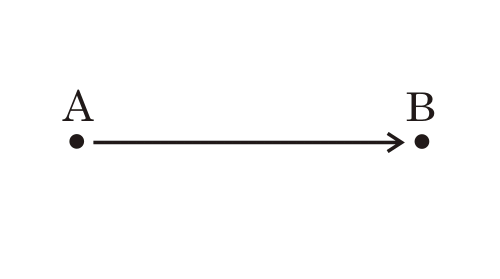|
LITR 4632: Literature of the Future  |
Student Midterms 2013 Sample Student Submission
|
 |
Katasha DeRouen
Summer 2013
A Symbolic Reading
In futuristic narrative literature symbols are often utilized
to correlate ideas based on conceptual theories. Static symbols aid in the
reader’s ability to connect the present or past with innovative situations
suggested within the passage. In the texts,
The Parable of the Sower, Revelation,
and The
Time Machine time is strongly
portrayed throughout the readings symbolizing various narrative theories. Mozart
in Mirrorshades,
Genesis, and
Stone
Lives utilize animalistic symbols
paralleling certain animals with decline and evolution.
Symbols of Time
The Parable of the Sower,
by Octavia Butler parallels time with
the concept of rebirth/growth. Time,
for Lauren, is defined as her current existence. She is confined behind the
walls of a minutely secure community with modest resources for survival and
security; this is her reality, her time.
Lauren’s ambition to leave her society and begin a new religion signifies
rebirth. She constantly refers to the imminent
time whence she will leave her people
and begin a new religion based on growth. Lauren writes, “We are Earthlife
maturing, Earthlife preparing to fall away from the parent world” (151). The use
of the words ‘maturing’ and ‘parent’ in the above quote suggests Butler’s
embedded theory of rebirth/growth.
Parable displays the narrative theory of change through the use of
time as a symbol of rebirth.
Revelation, as translated
through the King James Version of the Bible, also depicts
time as a connecting symbol to
various narrative theories. A very profound correlation to
time involves the denotation of
linear events within the text. Futuristic narratives often employ the idea that
time, human existence has a birth and a death. The Bible explores this notion of
time with a beginning, Genesis, and
an end, Revelation.The book of Revelation
outlines the Lord’s existence as “Alpha
and Omega, the beginning and the end, the first and the last” (22.13), hinting
towards a linear timeline. Further analysis of this infamous line from the
scripture allows the reader to conclude that life, no matter the middle, will
begin and end.
H.G.Wells’
The Time Machine is also a piece that
uses time as an aspectual symbol of
narrative theories. Here, Time is
presented as a dimension; Wells’ custom of capitalizing
Time throughout the text defines it
as such. In analyzing the actual Time
(as a dimension), the reader is able to connect
time to the sublime. A common
depiction of the sublime is through the description of beauty. Beauty is a
social quality; when men, women, or animals emit a sense of joy and pleasure in
beholding them, they implore sentiments of tenderness and affection towards
them, almost always resulting in a kind relationship (Dr. White 4632 definition
of sublime/beauty). Wells’ description of the Eloi, “pretty little people” (29),
solidifies the beauty aspect of the sublime. He forms a welcoming relationship
with the Eloi, as he enjoys a conversational feast amongst them. Interpretively,
the Time Traveler not only travels through
time, but he is hoisted into a very
different dimension, upon which he connects
Time to the sublime.
Animalistic Symbols
Mozart in Mirrorshades,
by Bruce Sterling and Lewis Shiner conveys an account with the infamous Mozart
of the past through the eyes of Rice, a refinery employee who travels back in
time to intertwine the past with present industrialism. An animal, per se
Mozart, demands to be referred to as “Wolf”, claiming the name sounds more
modern (228). However, one may interpret the command as a foreshadowing of
animalistic traits soon to arise within Mozart. Wolves are personified as sly
(trickster, if you will) and vicious. At story’s end, the plot reveals “Wolf” is
responsible for the decline of Salzburg… he is true to the metaphor, a wolf in
sheep’s clothing. While everyone in the city admired Mozart for his talents, he
was ultimately connected to the decline of the time.
Genesis,
as translated through the King James Version of the Bible, describes the
introduction of the serpent into the Garden,
“Now the serpent was more subtle than any beast of the field which the LORD God
had made. And he said unto the woman, Yea, has God said, you shall not eat of
every tree of the garden” (3.1).
The animal in this
text, again sly and deceiving, is able to convince Eve to accept temptation in
eating from the forbidden tree, thus prompting the demise of primal human
existence. Eve, accepting the persuasive advances of the serpent caused her and
Adam to view themselves in a different manner than intended; they recognized
nakedness and began to hide themselves from one another and the will of God.The
serpent was a symbol of evil power and
deception from the
underworld.
The serpent represents decline in this
scripture.
Paul Di Filippo’s
Stone
Lives, also utilizes animalistic
symbols within the text. The title character is introduced to the reader with a
handicap, the inability to see. His vision has been withheld on an experimental
basis; he is to view the makeshift society through the eyes of an unbiased
person. Within the passage, the reader encounters an exotic animal, “a small
animal, a lemur or tarsier. Its big luminous eyes, its long tail arcs in a
spiral” (188). Here, the animal is described as having large eyes, the very
sense that has handicapped Stone. The terms small and confined are indicative of
the FEZ, the semi-private society. Filippo describes the animal’s eyes as
luminous, which denotes a bright vision, while the end of the animal, its long
spiracle tail identifies with futuristic evolution. Thus, one may conclude that
the animal in this piece symbolizes Stone, and a future vision for the compound.
Often in futuristic narrative literature symbols are utilized to connect ideas based on conceptual theories. Static symbols are a constant aid to the reader’s ability to unite the author’s literary vision in depicting the past, present, and future.
Evolving to What?
In my quest to broaden my intellectual interests, I opted to
venture into Literature of the Future. My ability to comprehend and remain
abreast on futuristic readings is often prohibited by personal interest, and
level of believability. Admittedly, I am not fond of the Sci-Fi genre in its
entirety; however, I am extremely interested in certain aspects of the genre
that directly shape the evolution of our world. As a future educator, I find
particular interest in the progress of our present into the future. I do
consider the future as a book being written now, and further developed based on
society’s present choices.
In a classroom setting, students’ attitudes toward reading
may vary intensely. Thus, a successful teacher must employ the ability to engage
all students. Futuristic literature may be utilized as a means to both inform
and entertain student readers. Through recent experience I have found students
respond to content that directly effects them, or that they can relate to.
The narrative Better
Be Ready ‘Bout Half Past Eight, reads as a story of the present. At the time
it was written it may have been viewed as an alternative future narrative, but
presently, in today’s society alternative genders are prominent, a stern
reality. Ethically, alternate realities may conflict with alternate moralities,
but at the end of the day an educator is responsible for the holistic well being
of the student, thus passing judgment is not inclusive to this practice. Many
students may find themselves faced with the choice of transforming themselves
into the person they feel they are, and with today’s technological advances this
process is seemingly attainable.
In contrasting
evolution as a cyclical pattern, I shall revert to my grandmother’s time. Her
life was filled with laundry, cooking, and the sullen memories of slavery. To
place myself in her time, I (she) would have never been able to grasp the fact
that there is an African-American President of the United States. Relying on the
future as a cyclical pattern is not an accurate adjustment. In the time of
slavery, how could my grandmother fathom what has come to be a reality? Hence
when referencing evolutionary texts, I disagree with a number of points within
Pamela Richey’s statement from her essay
The Future: What Our Fears, Hopes and Choices Create,
“… in evolutionary narratives, the future is
being written and the story has a cyclic pattern (life is a cycle).” I view the
future as unwritten, yet shaped by our past.
 |
 |
 |